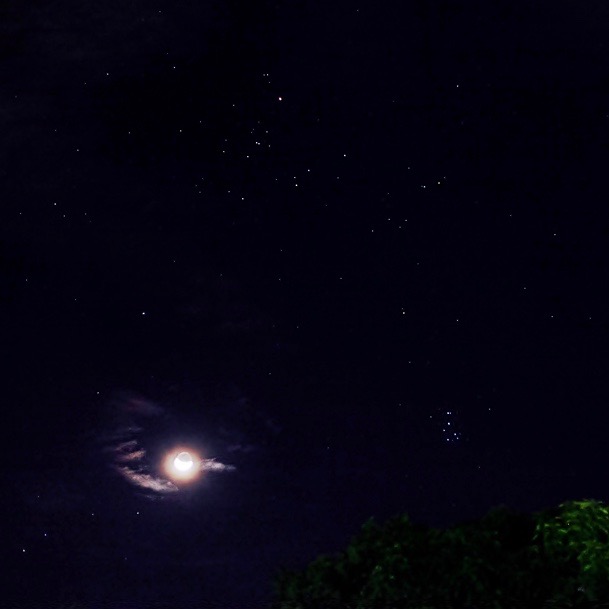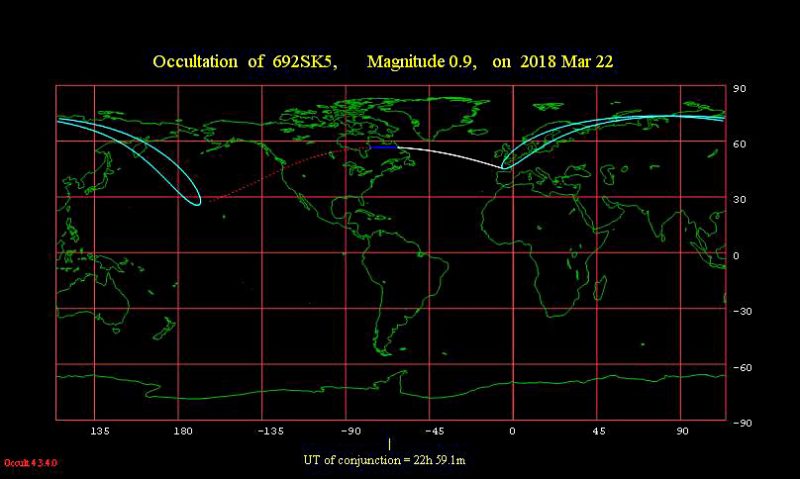Tonight and for the next couple of nights – March 21 to 23, 2018 – the waxing crescent moon shines in front of the constellation Taurus the Bull. On March 21 and 22, the moon is near Taurus’ two most prominent signposts: the bright star Aldebaran and the Pleiades star cluster. By March 23, the moon is near the tips of the Bull’s Horns.
Aldebaran is so bright – and the Pleiades are so noticeable for their compactness and distinctive shape – that you’ll surely notice them near the moon, even if your sky is somewhat obscured by city lights.
Read more: Pleiades star cluster, aka the Seven Sisters
Read more: Aldebaran is the Bull’s fiery eye

As always, the moon travels eastward in front of the constellations of the zodiac. It travels its own diameter eastward every hour, covering about 13 degrees of sky per day.
On the sky chart at the top of this post, you can see the moon’s change of position relative to Aldebaran from March 21 to March 23. The moon lies to the west of Aldebaran (in the direction of sunset) on the evening of March 21 yet to the east of Aldebaran on March 23. The charts on this post are especially designed for North America. Nonetheless, from virtually everywhere worldwide, you’ll see the moon to the west of Aldebaran on March 21, and to the east of this star on March 23.
As darkness falls in North America on March 22, the moon and Aldebaran will be exceedingly close together on the great dome of the sky.
From far-northeastern North America, it might be possible to witness the moon occult (cover over) Aldebaran at evening dusk on March 22. From Greenland, Iceland, and far northwestern Europe on March 22, the lunar occultation of Aldebaran occurs after dark.

No matter where you are, take a good look at the moon itself. If you have binoculars – or even with the eye alone – scan the darkened portion of tonight’s waxing crescent. You might see the soft glow of earthshine illuminating the nighttime side of the lunar disk.
Earthshine is twice-reflected sunlight – sunlight reflected from Earth to the moon, and then from the moon back to Earth.

Bottom line: From March 21 to 23, 2018, watch the moon light up Taurus the Bull. The moon occults, or covers, Taurus’ brightest star – Aldebaran – as seen from far northeastern North America and Iceland on March 22.












